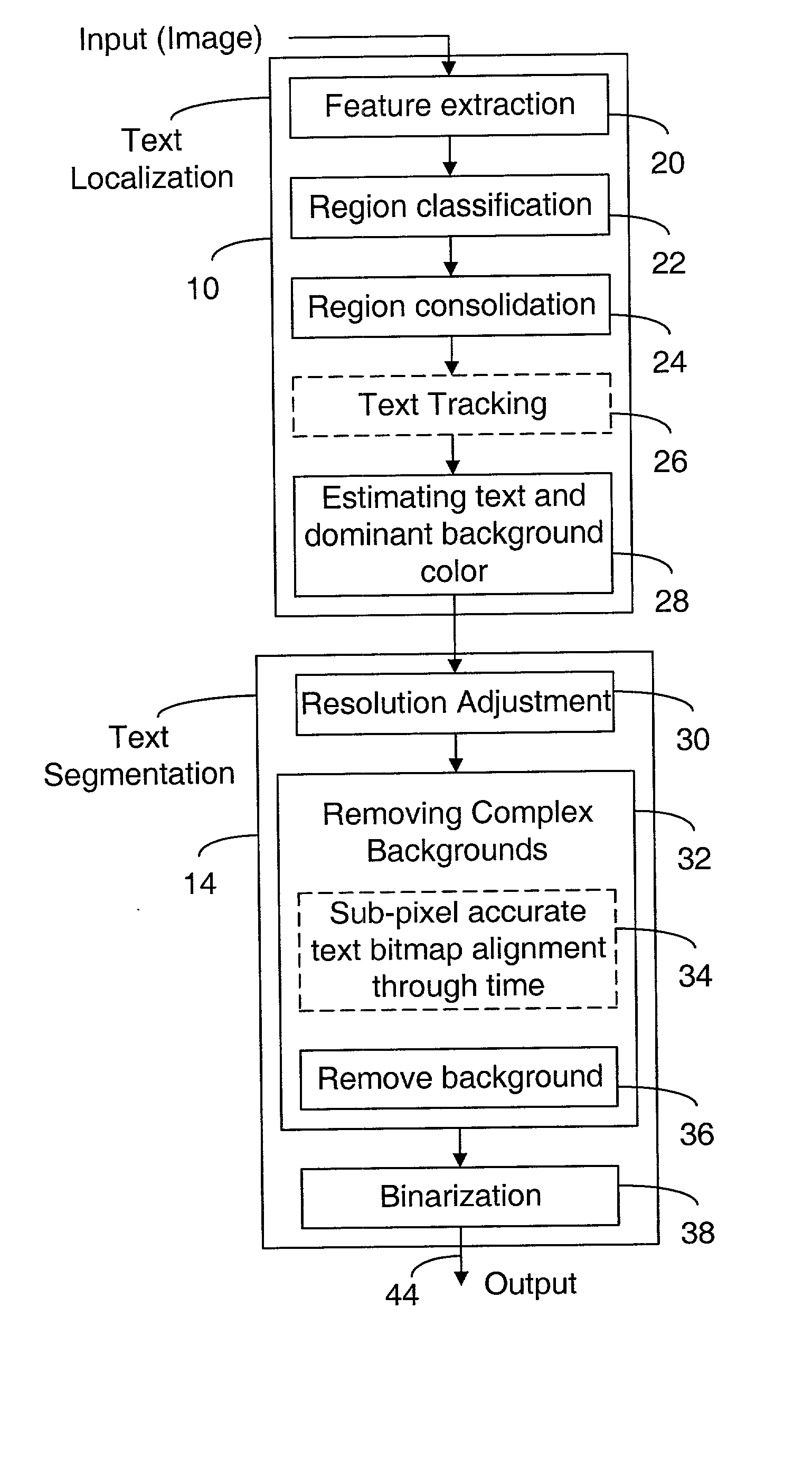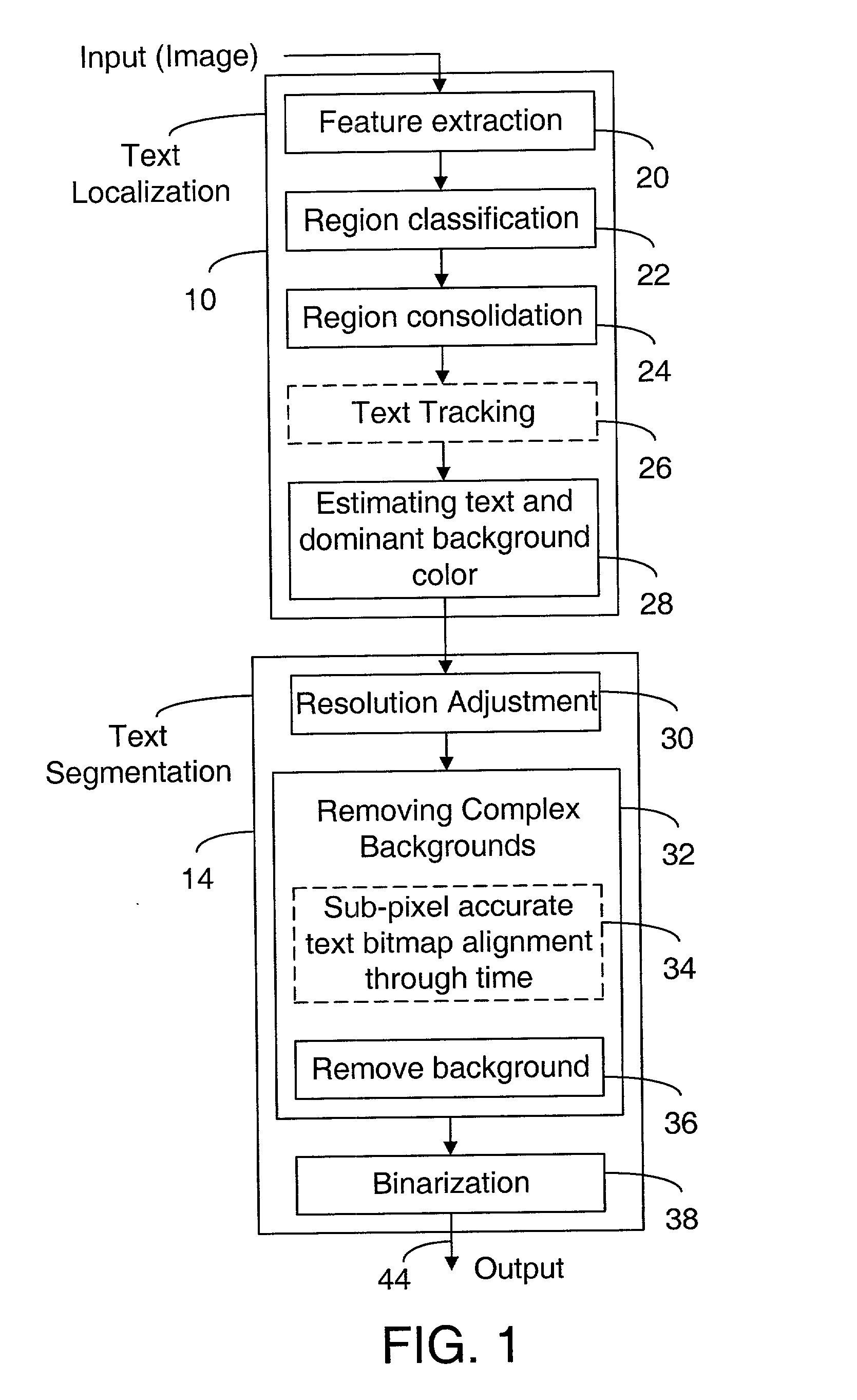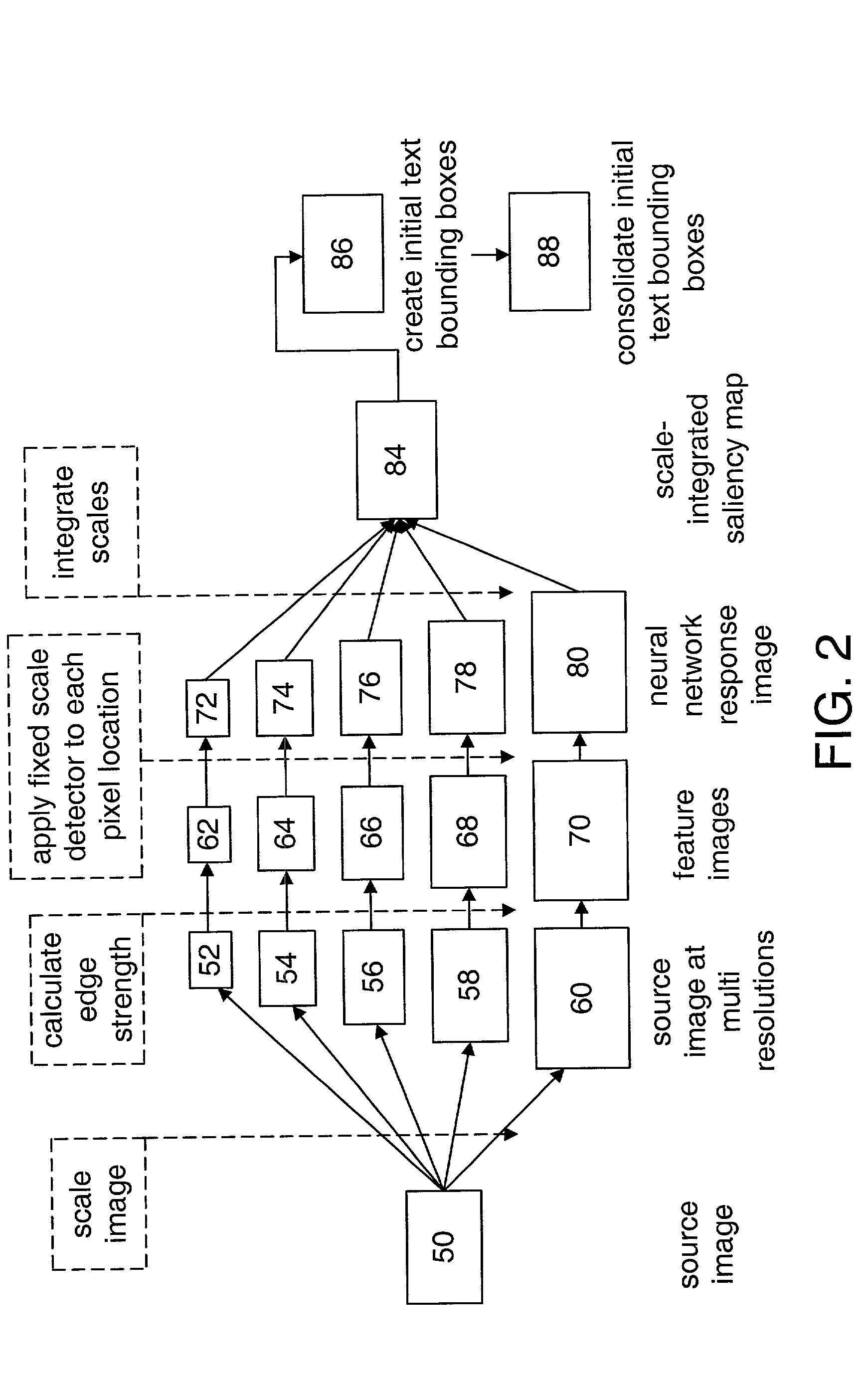Generalized text localization in images
a text localization and image technology, applied in image enhancement, image analysis, instruments, etc., can solve the problems of non-general in some aspects, non-text parts of web pages, and the inability of existing text segmentation and text recognition algorithms to extract tex
- Summary
- Abstract
- Description
- Claims
- Application Information
AI Technical Summary
Problems solved by technology
Method used
Image
Examples
Embodiment Construction
) gives an example of the Initial text box creation algorithm.
[0061] Initial Text Box Creation Algorithm (Pseudocode Example 1):
1 (1) search for next core pixel and create a new text box of width and height 1. (2) do (3) extendNorth (box) (4) extendEast(box) (5) extendSouth(box) (6) extendWest(box) (7) while (box changed)
[0062] The average intensity of the pixels of the adjacent row above the total width of the box in the overall edge strength image is taken as the criterion for growing in that direction. If the average intensity is larger than th.sub.region=4.5, the row is added to the box. This value is chosen to be a little bit smaller than th.sub.core in order not only to get a text box including the core of a text region, but a text box that encompasses all parts of the text. Next, the same criterion is used to expand the box to the left, bottom, and right. This iterative box expansion repeats as long as the bounding box keeps growing (see Pseudocode Example 1).
[0063] FIG. 3 il...
PUM
 Login to View More
Login to View More Abstract
Description
Claims
Application Information
 Login to View More
Login to View More - R&D
- Intellectual Property
- Life Sciences
- Materials
- Tech Scout
- Unparalleled Data Quality
- Higher Quality Content
- 60% Fewer Hallucinations
Browse by: Latest US Patents, China's latest patents, Technical Efficacy Thesaurus, Application Domain, Technology Topic, Popular Technical Reports.
© 2025 PatSnap. All rights reserved.Legal|Privacy policy|Modern Slavery Act Transparency Statement|Sitemap|About US| Contact US: help@patsnap.com



